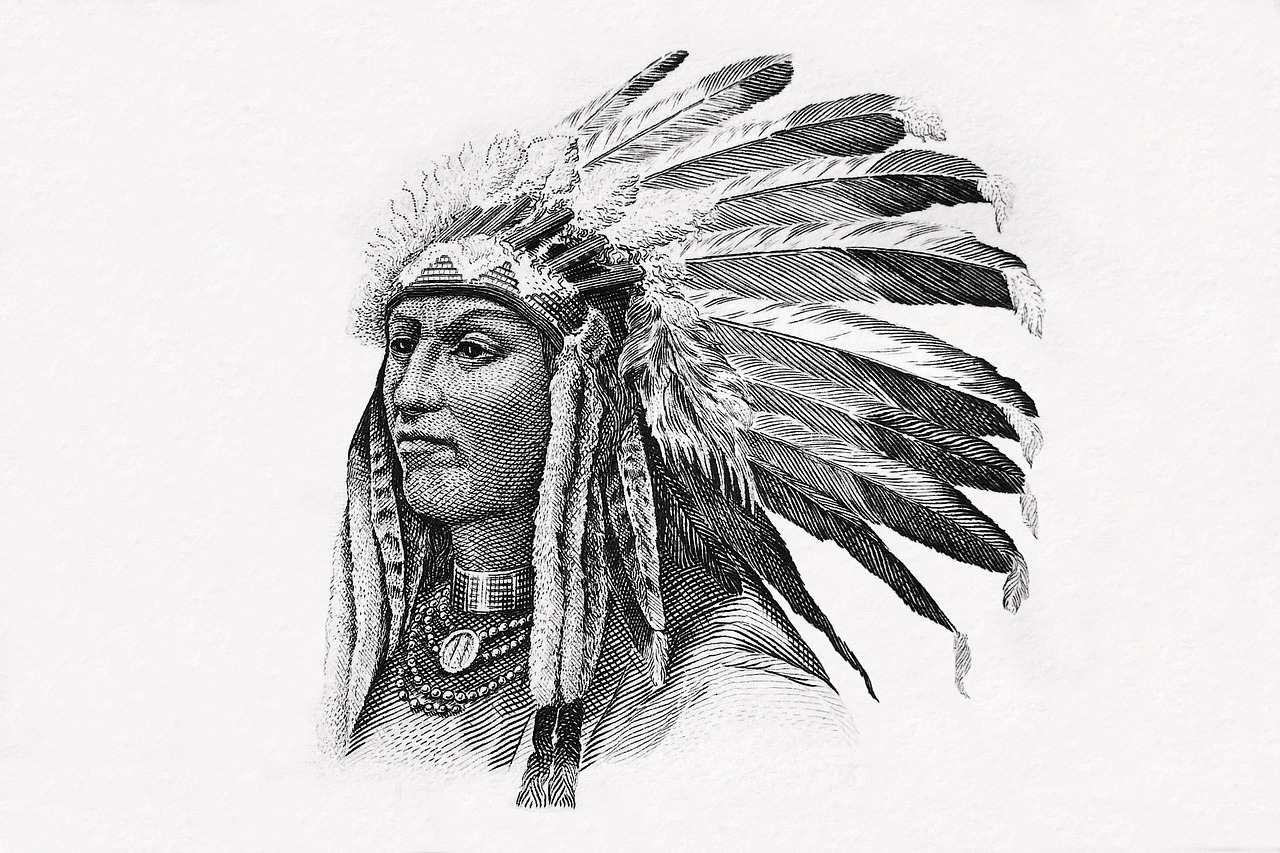Between Legend and Historical Truth
The image of Pocahontas as a romantic Indian princess who falls in love with an English adventurer is one of the most well-known – but also one of the most inaccurate – depictions in American history. The true story of the young Powhatan woman is far more complex, political, and tragic than the myth Hollywood has created.
The Historical Person: Matoaka and Her World
Early Life on the Edge of Colonization
- Birth name: Matoaka (“Playful One”)
- Nickname: Pocahontas (“the Playful One”)
- Born: around 1596 in Virginia
- Father: Wahunsenacawh, paramount chief of the Powhatan Confederacy
- Homeland: Tsenacommacah, a territory of about 30 Algonquian-speaking tribes
The Political Reality around 1607
When the English landed in Jamestown, Matoaka was about 10–11 years old. Her father ruled over a complex alliance system of about 15,000 people – the English were initially just a small group of intruders in a sophisticated political landscape.
The Most Famous Myth: The Rescue of John Smith
The Disney Version vs. Historical Facts
The Myth: Pocahontas throws herself protectively over John Smith when her father is about to execute him.
The Historical Reality:
- Political ritual: Historians suspect it was an adoption ceremony
- Smith’s own contradictions: He mentioned the “rescue” only years later
- Cultural misunderstandings: Likely a demonstration of the chief’s power
John Smith’s Credibility
- Self-promoter: Tended to exaggerate his own importance
- Late account: Story first published in 1624
- Contradictory statements: No mention in his earlier writings
Pocahontas’ Actual Role as Mediator
Diplomatic Relations
- Food supplies: Provided the starving settlers with food
- Exchange of information: Interpreted between the cultures
- Peacemaker: Mediated in conflicts
The Abduction: A Political Act
1613: Pocahontas was captured by English settlers
- Means of extortion: Intended to force the release of English prisoners
- Long captivity: Over a year in English custody
- Conversion attempts: Christianization during imprisonment
Marriage to John Rolfe: Politics Instead of Romance
The True Story of the Relationship
- John Rolfe: Tobacco planter, not an adventurer
- Pragmatic marriage: Intended to secure peace between Powhatan and the English
- Conversion: Pocahontas converted to Christianity (Rebecca)
- Son Thomas: Born in 1615
The Motives Behind the Marriage
- English strategy: Peace through family bonds
- Powhatan tactics: Access to English technology
- Personal fate: Pocahontas had little choice
The Journey to England: A Sensation and Its Tragic End
The “Civilized Savage”
- 1616: Pocahontas traveled to England as a living symbol of successful colonization
- Social sensation: Presented at the royal court
- Propaganda purpose: Promotion of the Virginia Colony
- Cultural shock: Unfamiliar climate, diet, and lifestyle
Tragic Death
- Disease: Likely tuberculosis or pneumonia
- Place: Gravesend, England, March 1617
- Age: Only about 21 years old
- Last words: “All must die, but it is enough that my child lives”
Legacy: From Person to Symbol
Descendants and Heritage
- Son Thomas Rolfe: Ancestor of many prominent Virginians
- Cultural icon: Symbol of the “civilizable savage”
- Political tool: Justification of colonial expansion
Modern Reception and Reassessment
- Indigenous perspectives: Pocahontas as a victim of colonialism
- Critical historical research: Deconstruction of the myth
- Cultural appropriation: Debate on the representation of Indigenous figures
The Powhatan Perspective: A Lost Daughter
Oral Traditions
- Early victim of colonial violence
- Symbol of the loss of land and culture
- Warning against assimilation
Modern Indigenous View
- Emphasis on her true name: Matoaka
- Rejection of the romanticization of her fate
- Demand for historical accuracy
Why the Myth Endures
Psychological Appeal
- Romantic idealization: Love transcends cultural boundaries
- Relief of guilt: Whitewashing colonial violence
- Simple narratives: Good vs. evil schema
Commercial Exploitation
- Disney films: Strongly simplified version
- Tourism: Marketing in Virginia
- Pop culture: Continuous reinterpretation
Facts vs. Fiction: The Key Differences
Age Difference
- Myth: Adult love relationship
- Reality: Matoaka was about 10–11 when Smith arrived
Relationship with John Smith
- Myth: Romantic love
- Reality: No historical evidence of a close relationship
The “Happy Ending”
- Myth: Happy union
- Reality: Abduction, illness, early death
Lessons from the True Story
Historical Understanding
- Complexity of colonial encounters: Beyond simple narratives
- Inclusion of Indigenous perspectives: Multiplicity of voices in history
- Critical source analysis: Questioning European accounts
Contemporary Relevance
- Postcolonial reflection: Dealing with colonial legacy
- Indigenous sovereignty: Respect for self-determined narratives
- Cultural sensitivity: Responsible handling of history
Conclusion: The Humanity Behind the Myth
The true story of Pocahontas/Matoaka is not a romantic fable but a tragic narrative of cultural encounter, colonialism, and the loss of Indigenous autonomy. By deconstructing the myth, we not only honor the historical person but also acknowledge the complex reality of Indigenous experiences with European expansion.
Her fate reminds us that history is always multidimensional and that behind simplified legends often lie uncomfortable truths worth listening to.
Historical Sources and Further Reading:
- The True Story of Pocahontas (Dr. Linwood “Little Bear” Custalow)
- Pocahontas and the Powhatan Dilemma (Camilla Townsend)
- National Museum of the American Indian: Critical reassessment
- Powhatan tribal perspectives: Oral traditions

